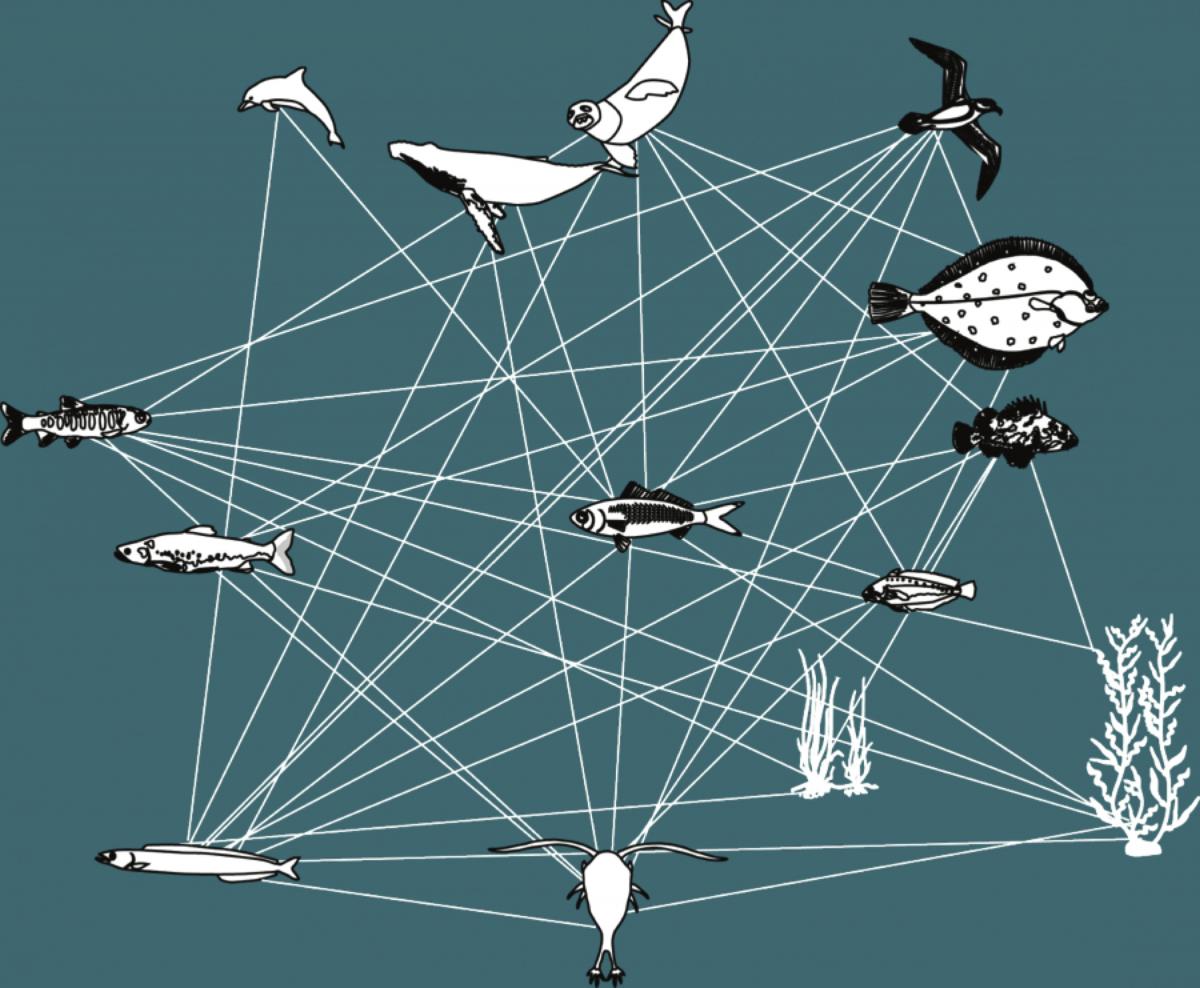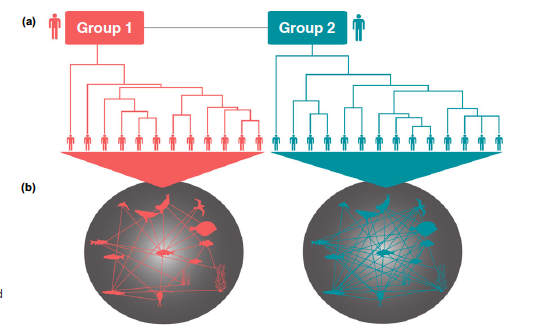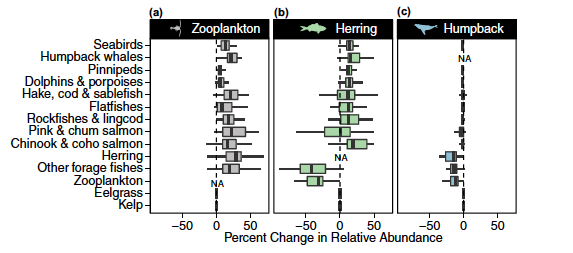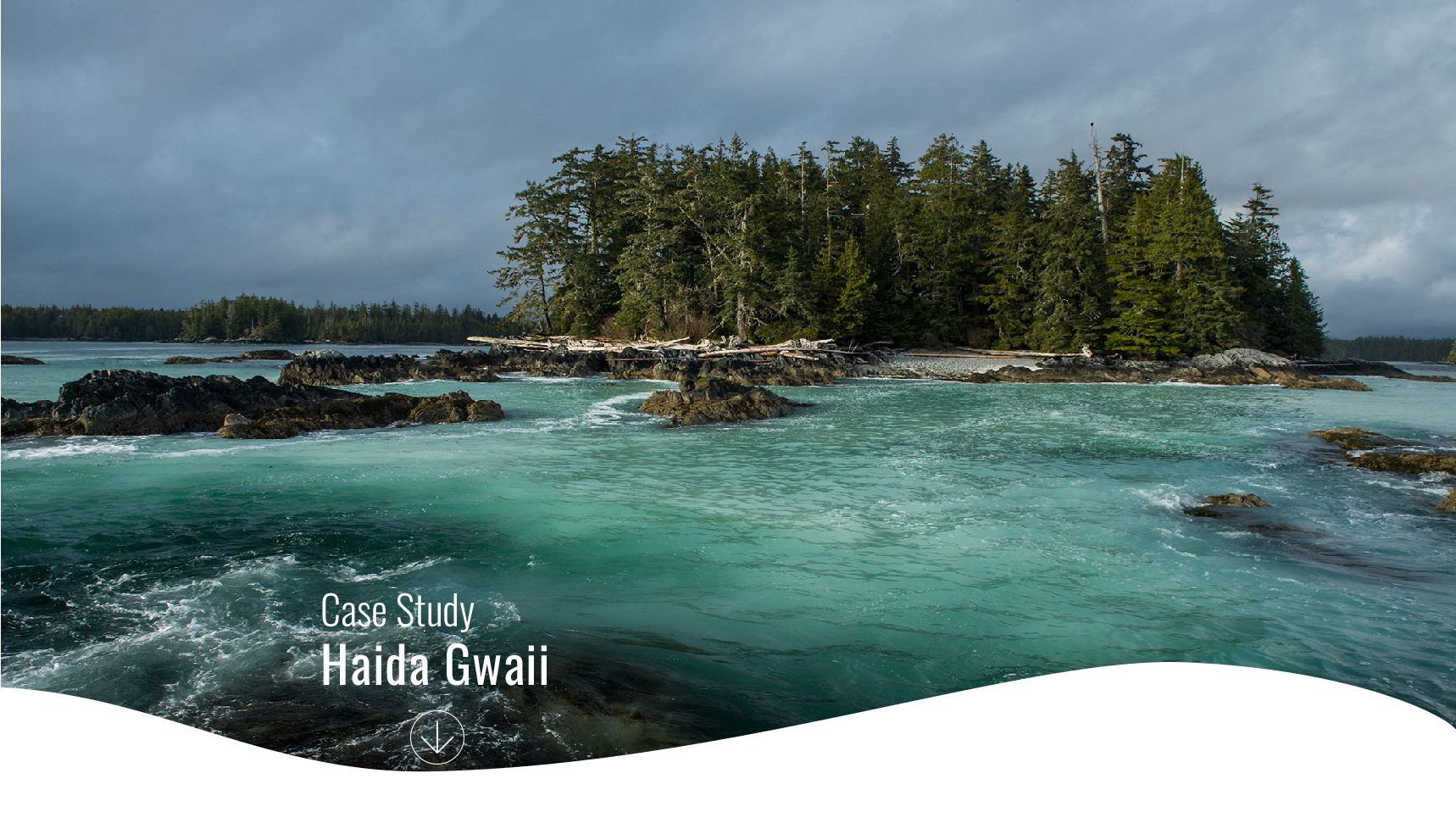Uncertain food webs
Examining data of predator-prey relationships and other species interactions can help disentangle these complex dynamics, uncover potential ecosystem effects, and identify potential feedbacks that slow recovery. However, in many systems data on the linkages among species within the complex food webs are limited. In these cases, resource managers often turn to experts to help develop qualitative and quantitative models of the food web (e.g., Ecopath, Network Analysis, Bayesian Belief Networks). These modeling approaches can be useful for understanding ecosystem linkages, potential drivers of change, and potential outcomes from different management decisions.

In Haida Gwaii, Pacific herring are thought to be key species in the foodweb, providing an important subsidy throughout their lifecycle (i.e., as adults and through their roe (eggs) and milt (sperm)). In addition, several factors may influence herring population dynamics, including climate, fishing, and predation by marine mammals, fish, and seabirds. Food web models are a useful tool to examine the extent to which herring may influence the abundance of their predators and the potential outcomes of different management decisions and/or environmental changes on the food web (e.g., increases in zooplankton, changes in predator abundance). To develop food web models, managers often turn to experts. However, different experts may perceive the structure and interactions in a food web differently, which may lead to differences in perceived outcomes from different management decisions and potential for conflict among different resource users. To understand if and how different people perceive the herring-centric food web, we developed qualitative food web models of the Haida Gwaii ecosystem.14 We surveyed a number of experts from academia, Canadian government agencies, First Nations, and other traditional and local knowledge holders to document varying expert perceptions of ecosystem interactions and explored their implications for conservation and management. For each expert, we constructed their mental map of the food web interactions among species and simulated responses of these networks to hypothetical scenarios, including an increase in herring, the continued recovery of herring predators, and changes in ocean productivity. Our analysis showed that, across all experts’ mental models, increases in herring predators, such as whales, led to a predicted decrease in herring and other forage fishes, whereas simulated increases in productivity predicted increases in relative abundance of all species. However, predictions about changes in the food web driven by changes in herring varied among experts.
Lesson learned: Experts vary in their perceptions of food webs centered on Pacific Herring.


Simulating herring recovery with each unique mental model demonstrated wide variability in the perceived importance of herring to the surrounding food web and consequences of potential future management actions. These differences were not predicted by demographics of the experts. We show that among-expert differences in perceptions of ecosystem structure are logically tied to the consequences for how an individual might view the outcomes of predicted future change. Thus, for managers considering the development of models based on expert opinion, it is important to include multiple perspectives. This will allow a greater total space of available knowledge to be captured. Furthermore, while variable expert perceptions can lead to conflicts among stakeholders, explicitly capturing and acknowledging variation in expert perception may help reduce conflict.
